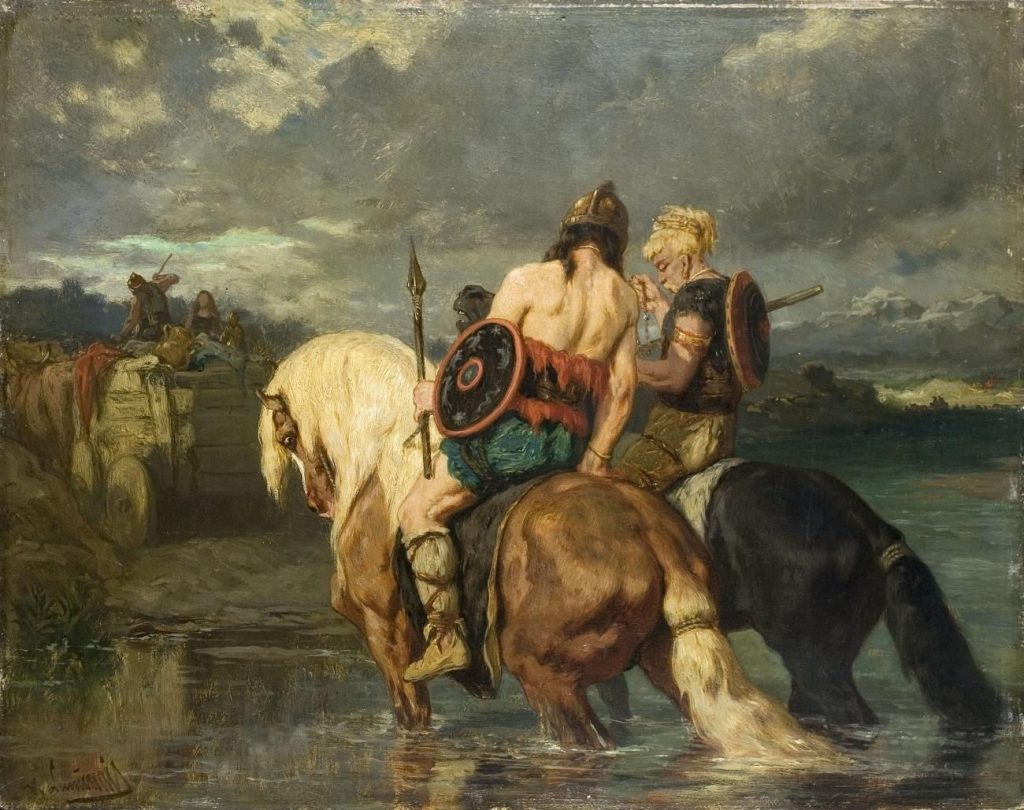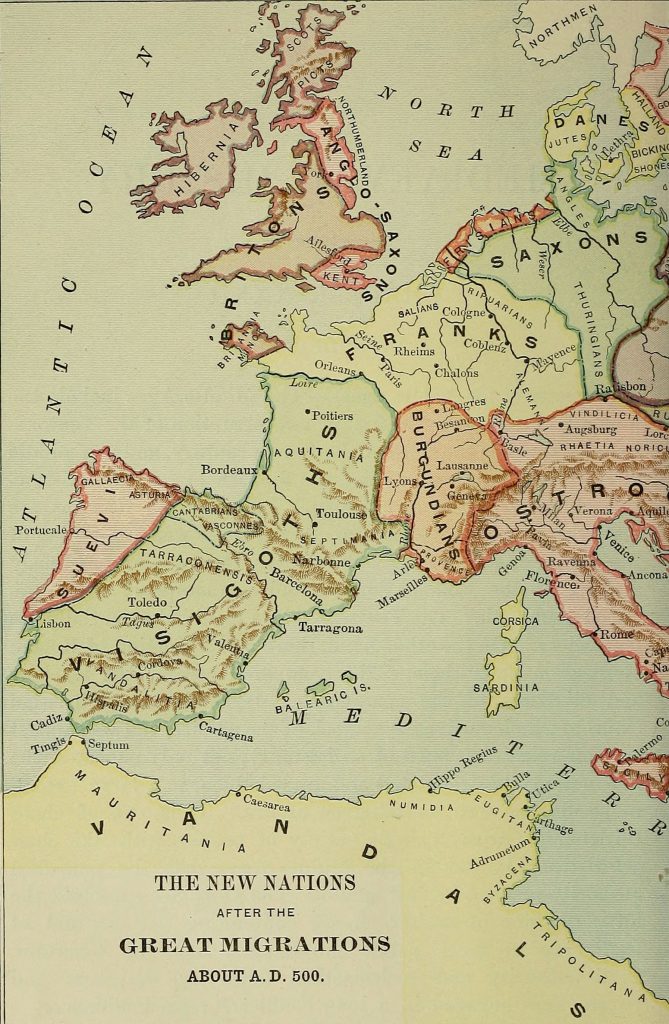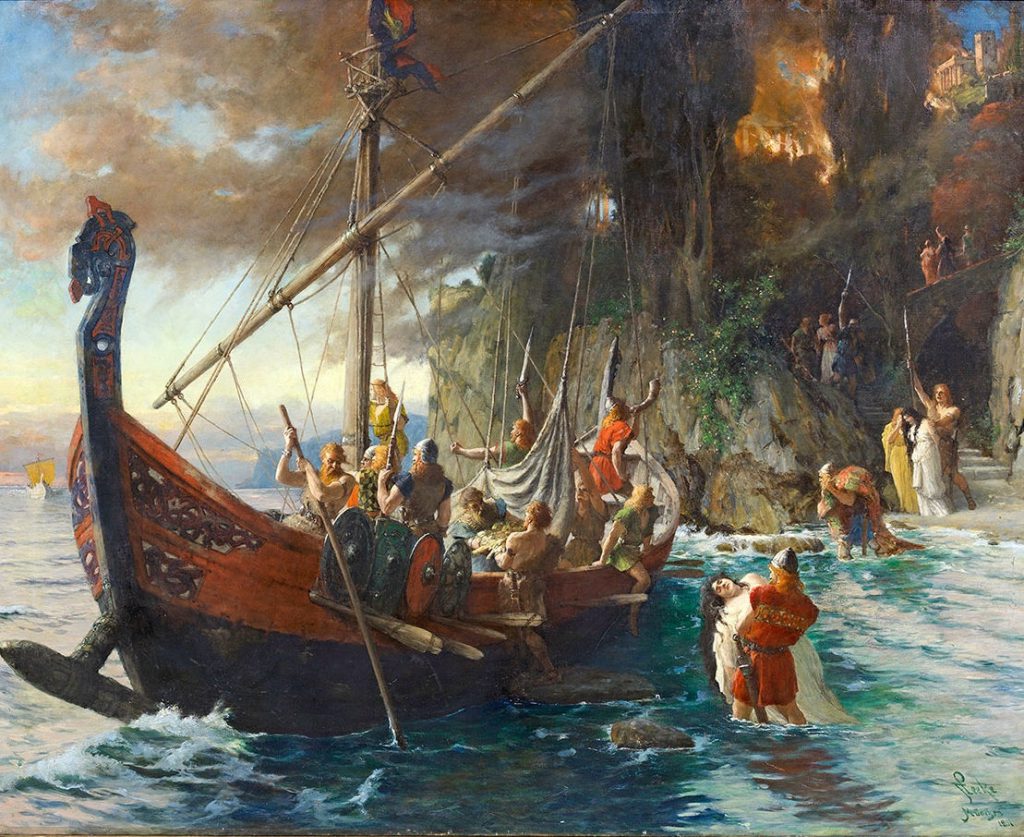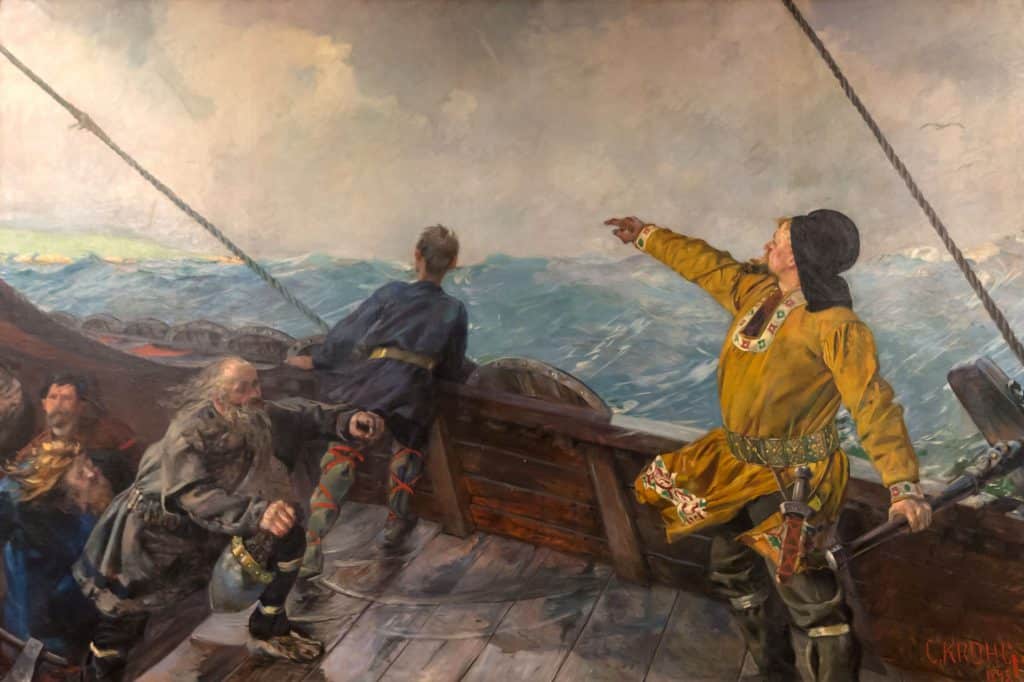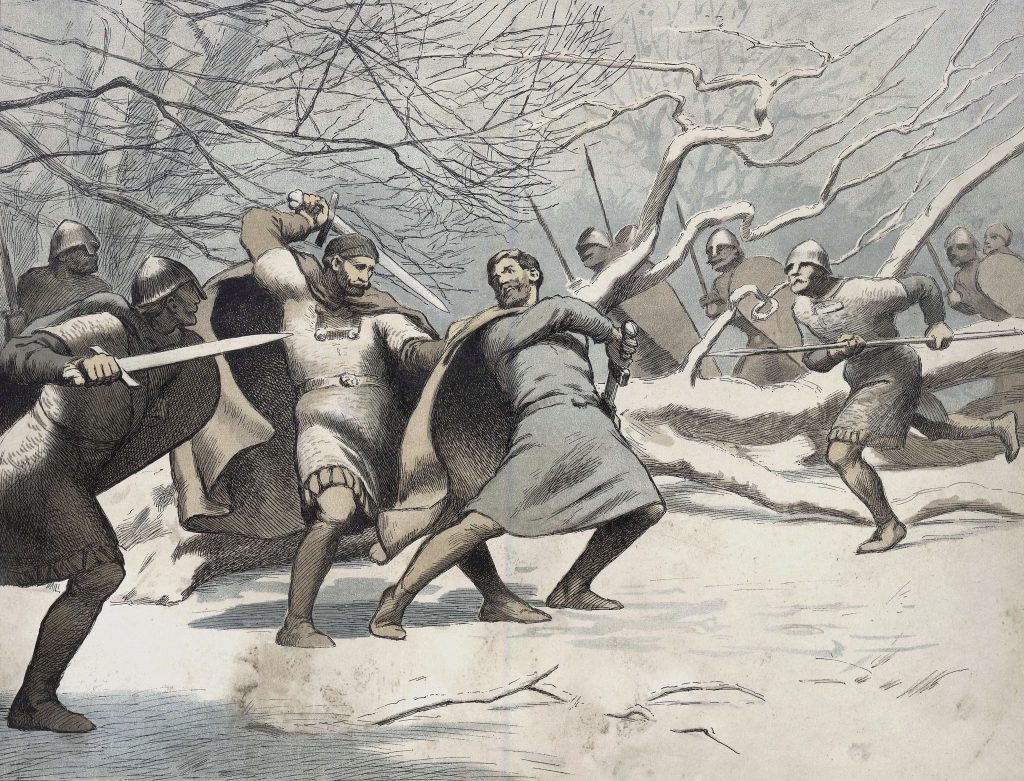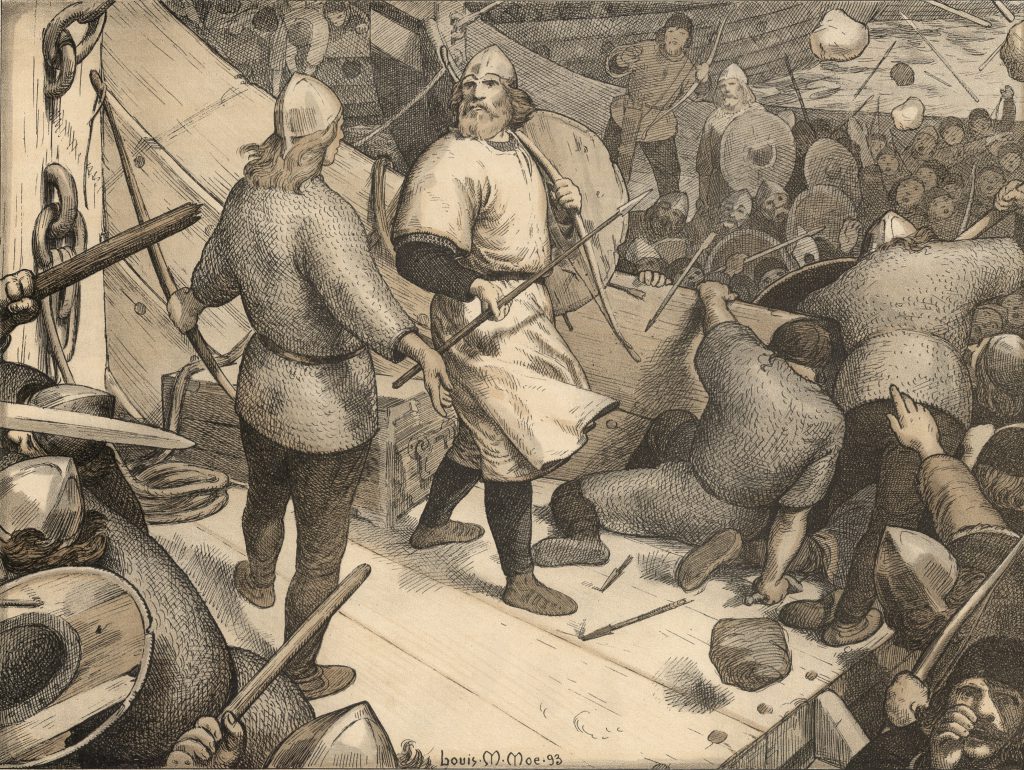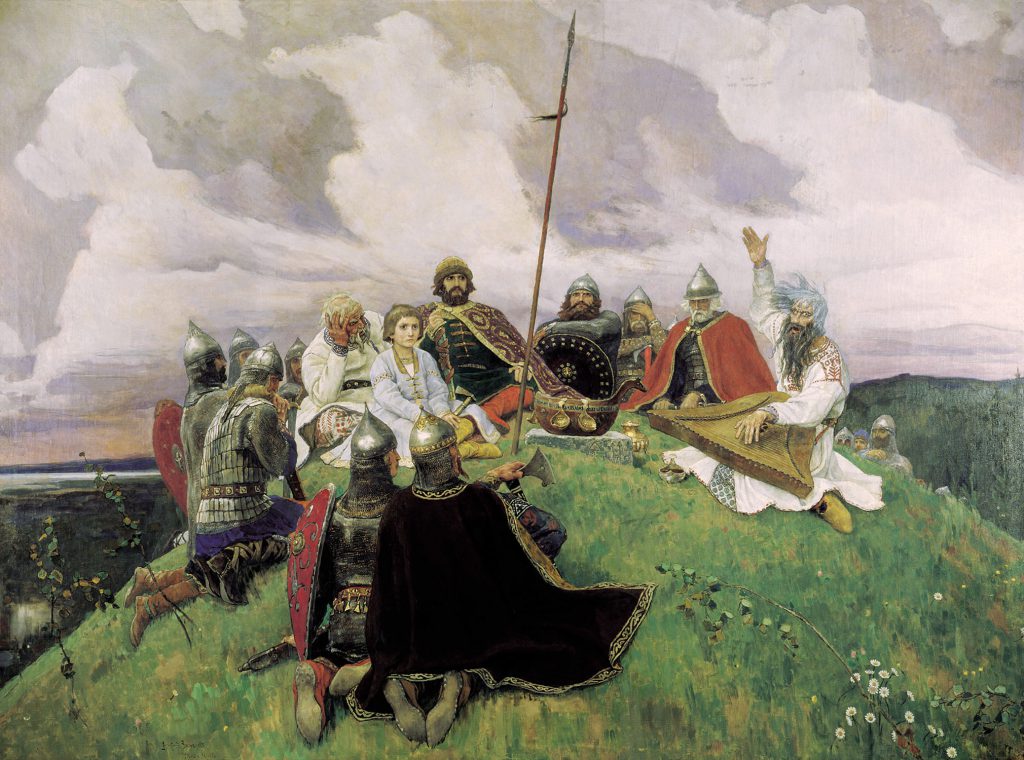Viking Age and the Early Middle Ages -category covers approx 500 years from the Fall of the Roman Empire to about year 1000 CE.
The Early Middle Ages in a Nutshell:
The end of Roman rule coincides with the Migration Period, time of mass-scale migrations, when tribes and war bands moved from one area to another. The invasion and expansion of the Huns from the Eurasian steppes pushed the fleeing tribes ahead of them, who needed new places to live. The fleeing tribes bumped into other peoples and tribes and in turn pushed them forward, causing unrest and wars across Europe. Even though the Huns stopped in the area of present-day Hungary, the change set in motion by the Huns caused e.g. the invasion of Germanic tribes into Roman-ruled Gaul, the invasion of Rome by the Goths, and finally the destruction of Rome.
Tribes/nations that were on the move were e.g. Huns, Vandals, Jutes, Anglo-Saxons, Lombards, Alemanni, Franks, Avars, Slavs, Bulgars, Magyars and Goths, who split into Ostrogoths and Visigoths.
The collapse of Roman power in Western Europe was followed by an era of unrest and chaos, as the broken parts of a huge power vacuum led to endless skirmishes and wars for power and territorial control.
The first permanent kingdom that rose to its feet after the fall of Rome was the kingdom of the Franks, which emerged from the region of today’s northern France. The Merovingians, who ruled the Franks, first conquered part of Gaul from Rome, and the conquests continued over time, even though power changed from the Merovingian family to the Carolingian family.
Each of the Franks’ neighbors fell in turn, and under the rule of Charlemagne, the Franks were at their greatest empire, covering all of the lands of present-day France and Germany, the Netherlands, much of Italy, and even northern Spain. Within four hundred years, the Franks had managed to conquer and unite almost all of Western Europe under one flag and one king. Charlemagne was crowned emperor in 800, and he was the first to bring the emperorship back to Europe after Roman rule.
The kingdom of the Franks was divided into three parts in 840, when the king divided his kingdom among his three sons. Louis the German (Louis II of East Francia) received the territory of present-day Germany, which later developed into the Holy German-Roman Empire. One of the brothers, Charles the Bald (Charles II), got the area of present-day France, and the third brother, Lothair I, got Italy, a thin slice of France from between his brothers lands and Frisia (the Netherlands).
Vikings in a Nut Shell:
At the end of the Frankish Empire, the Vikings began to sail more and more boldly and further and further from their Scandinavian home. They sailed west along the sea and east along the rivers. At first, Vikings made raids on the coasts and riverside cities. The most famous attack is the sacking of Lindisfarne Abbey on the coast of England in 793, which is considered the starting point of the Viking Age.
The raiding expeditions of the Vikings continued surprisingly long time, more than two hundred years. In addition to looting, the Vikings also quickly became explorers, traders, conquerors and founders of colonies.
The Vikings inhabited Iceland, Greenland, the Faroe Islands, the Shetland Islands, the Orkney Islands, the Hebrides, and also visited America while sailing the Atlantic. Ireland, Scotland and England were strongly shaped by continuous Viking contacts, conquests and occupations; their kingdoms were formed under the influence of the Vikings. A large part of the heritage of these countries is still Nordic today.
The Vikings sailed up the rivers into the interior of France and Spain, amassing riches along the way either by violence or the threat of violence. The Viking leader Rollo even attacked Paris and negotiated a peace agreement for a land area on the French coast, in the estuary of the Seine river. The Vikings stayed in the area, and when they were called the men of the north, the Normans, it was only natural that their area of residence began to be called Normandy.
In the east, the Scandinavian Vikings were called either Rus or Varangians. They traded along the Russian rivers and established colonies and ruled over very large areas. The Russian empire also originates from these early Viking colonies. Their raids extended to the Mediterranean, the Black Sea and even the Caspian Sea. The Vikings served all the way in Constantinople as the personal guard of Byzantine emperor, called Varangian Guard, participating in many wars in the region.
The year 1066 is considered the end of the Viking Age. At that time, King of Norway Harald Hardrada died in the Battle of Stamford Bridge against the King of England while trying to seize England for himself. However, the King of England Harold Godwinson didn’t have time to celebrate this victory, because William the Conqueror (Duke of Normandy) attacked southern England at the same moment. William the Conqueror won the kingdom for himself with his Norman army in the Battle of Hastings.
-You can get to the products of Viking Age and Early Middle Ages directly using this link-
